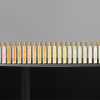Unlike nearly any other pop star, she’s writing her own rules rather than playing the game.
Words by Rachel Tashjian
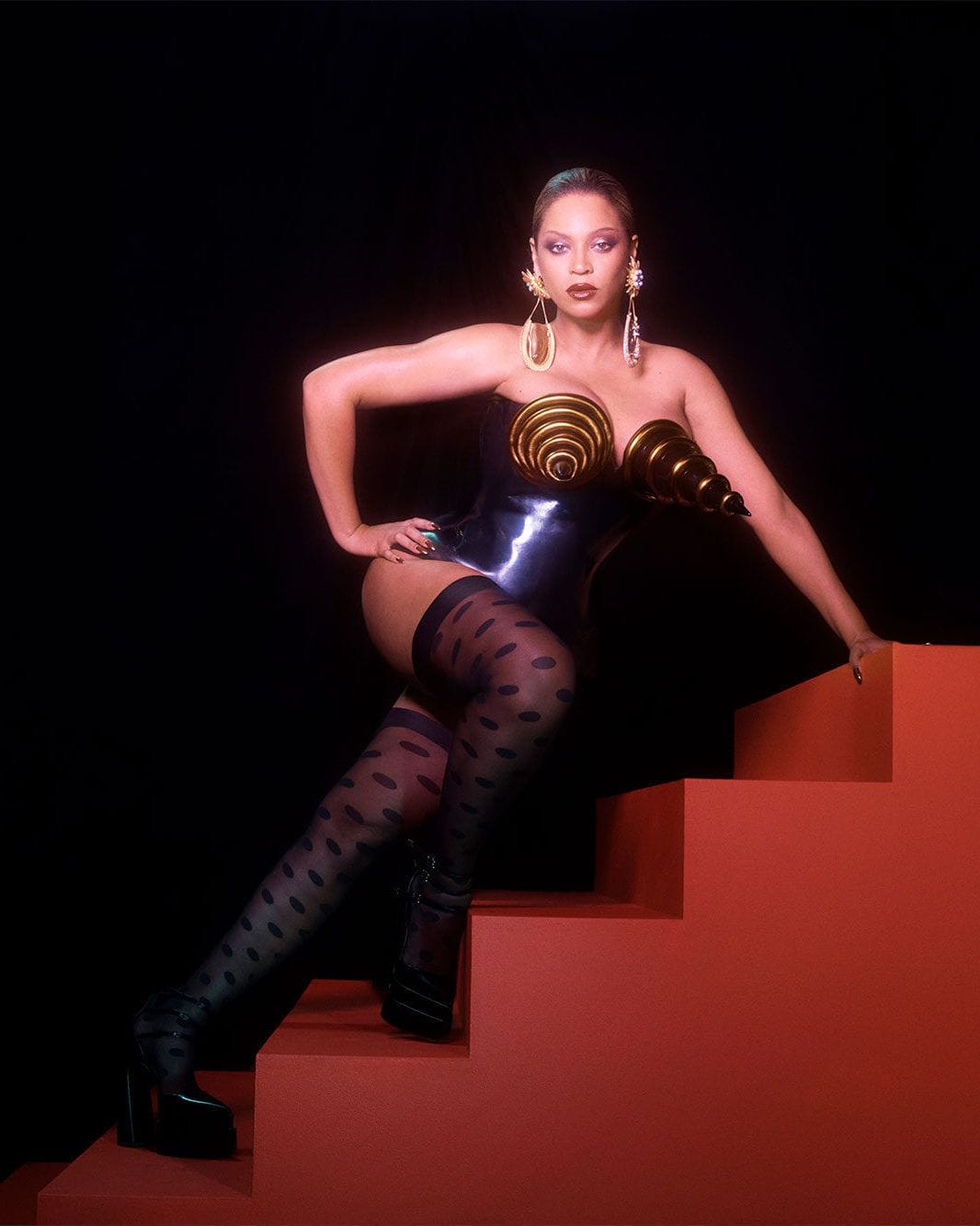
Beyoncé
Beyoncé does not simply release an album; she unleashes a vision. At times this comes, as it did quite revolutionarily with 2016’s Lemonade, as a visual album, in which the music is fully understood through rich accompanying film. Last week, in the days before she dropped Renaissance, her first solo studio album since then, she released a series of images on her site: on a red velvet sofa with brown liquor in a rocks glass, with metal spears jutting out of a fitted black minidress to form a plated bustier; sitting in the middle of an empty dance floor in an exuberant silver chiton gown, one arm flung in the air and the other covering her breast; floating in an altar room in a lime green lace dress with a facemask and a bushy lime Mongolian fur trumpet hem. The images are a nightclub fantasia that conjure the sense of decadent escapist release dressing up to dance all night promises. They set the tone for her sound, and prepared us for the house-inspired wildness, like a visual primer for her knowledge-hungry acolytes.
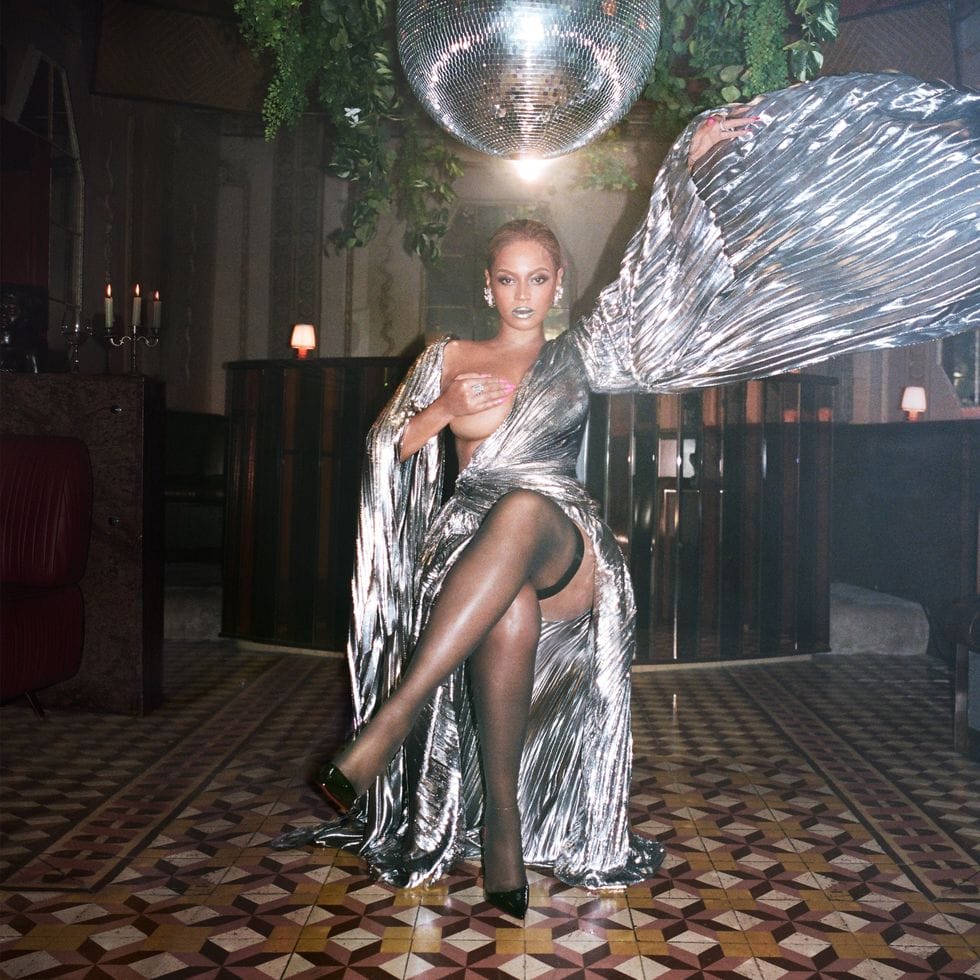
Beyoncé wearing Gucci. / Beyoncé
What’s even more striking about these images is the lack of recognizable designer pieces. Many of the names are familiar: the lime green lace gown is by Alaïa, remade in an acid tone from runway orange. A cropped red channeled puffer jacket, which she wears perched next to an old-fashioned “On Air” sign, is Dolce & Gabbana. There are several glittering, peekaboo bodysuits (a Beyoncé signature), two of which she wears while astride a horse; both are by relatively unknown designers, Gianni Naazar and Nusi Quero. A cone bra she wears on a set of red stairs looks like a Jean Paul Gaultier confection—a throwback to Madonna’s days as a pioneer of mass provocation—but in fact, it’s actually a look from Daniel Roseberry’s Spring 2022 Schiaparelli couture collection. These are not pieces that represent the obsessions of each designer, or the priorities of their brands. They represent, instead, Beyoncé’s vision for herself. They are the latest expression of her pure style.
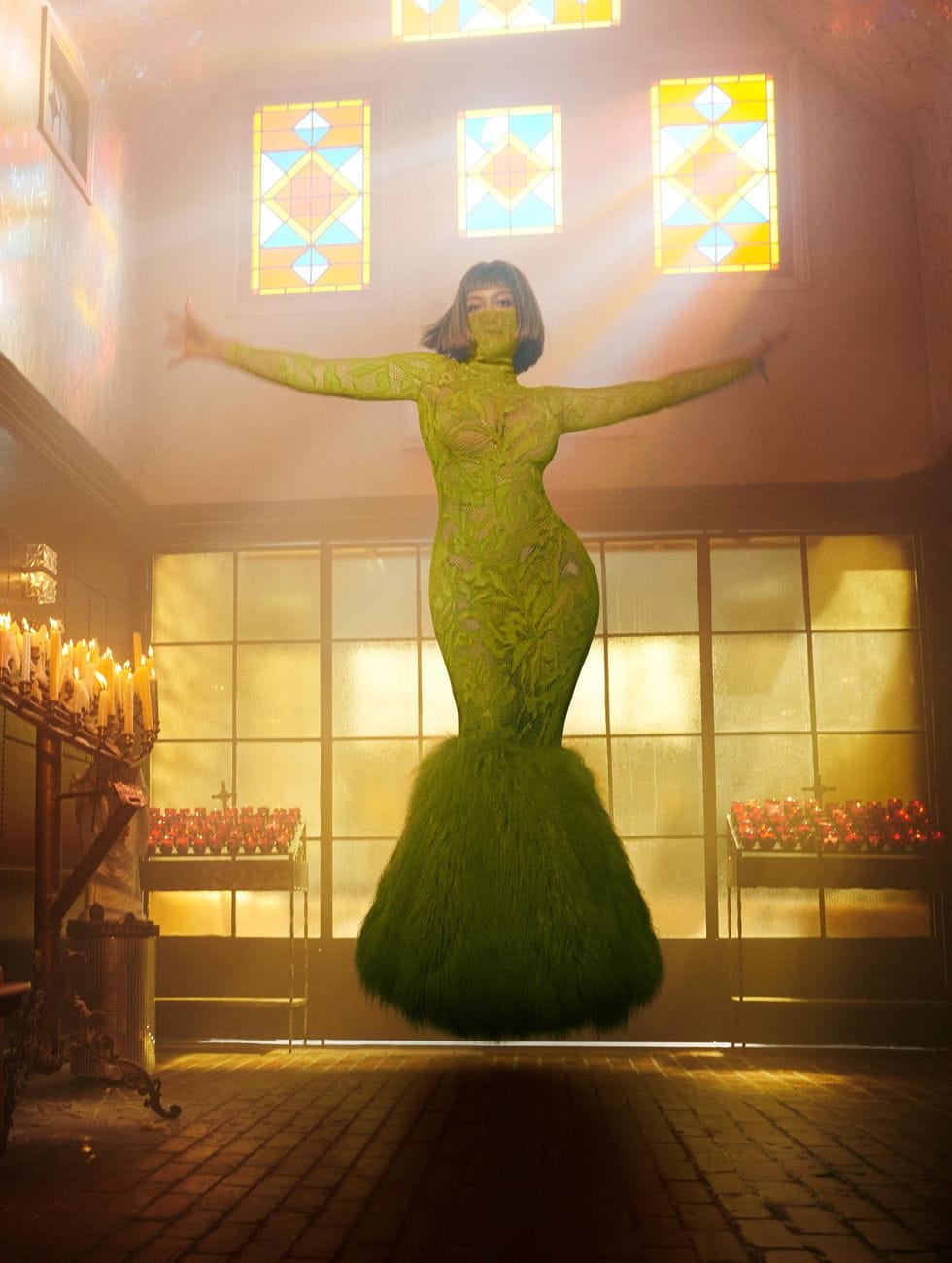
Beyoncé in a lime Alaïa dress. / Beyoncé
Over the past decade, musicians have become the fashion industry’s power players by aligning themselves, sometimes officially and sometimes less so, with brands. Influencers may still steer purchases, but musicians shape global taste and have been the bridge between what happens on the runway and young people, who now fervently discuss clothes and brands on social media. In particular, musicians are drawn to grails, whether it’s a jacket from Supreme and Louis Vuitton’s landmark collaboration, a Versace handbag, or a great Saint Laurent dress. Florence Welch, Lizzo, and Billie Eilish are a large part of the reason we know Gucci’s geek-chic aesthetic. Even more transformative has been the style of Rihanna, who has introduced us to the allure of vintage Chanel, the tulle charms of Molly Goddard, the chill weirdness of Glenn Martens’s Y/Project, and the couture genius of Guo Pei. She has changed the way that young women dress: remember when it seemed crazy that you would wear a tutu dress to go to Starbucks? Now overdressing is the Zoomer way of life. But even if you don’t have Rihanna’s passion, an obsessive relationship to fashion, with a playful, intuitive understanding of the latest it-items and brands and trends, has been a platform for many young musicians to demonstrate their cultural cache.
These are not pieces that represent the obsessions of each designer. They represent, instead, Beyoncé’s vision for herself.
Beyoncé sometimes wears such pieces, but in her official imagery, she resists such connoisseurship. Perhaps that is why her visuals are so singular, so indelible. Days later, I’m still thinking about her in that red puffer, gazing into the camera’s lens with that “On Air” sign aglow. She has literally red-hot news: new music, bitch! The images feel timeless, even when there are clear historical references, as in her most recent batch of photos, with their disco-era Vaseline glow, thick with Antonio Lopez realness. What sets her approach to clothes apart is that she chooses pieces that fulfill her identity, her sense of what she wants to be, embody, and feel, rather than what she sees as contemporary.
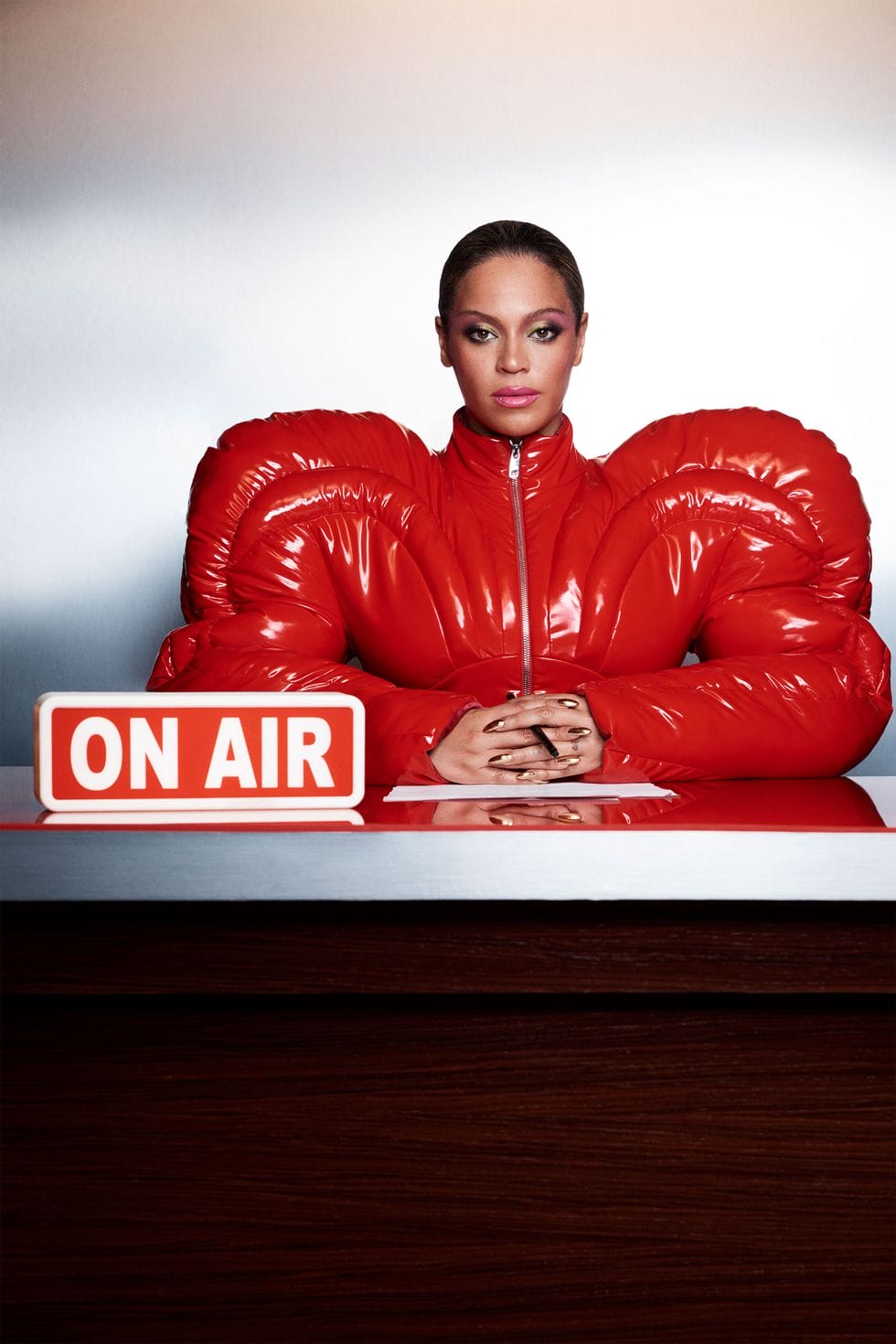
Beyoncé in a Dolce & Gabbana puffer. / Beyoncé
It is an image that seems to come completely from her own creative fount, done in collaboration with stylists like Marni Senofonte and photographers, too (here, Mason Poole and Carlijn Jacobs). She often wears younger, untested, unheard-of designers, which suggests she knows there is a power in the exposure she can offer; but just as often the label turns out to be Gucci or Dolce. When the world sees the picture, it’s not the brand that matters, but the emotion it creates within us, and what it might inspire us to do or wear.
This has always been her remit. One of the most indelible style moments of her career: when she took a baseball bat to a series of cars in the video for Lemonade’s “Hold Up.” The lemon-yellow silk georgette gown, with its plissé folds and loosely laced bodice, clung to her body in sensual but strong folds as she strode down the street, a woman scorned but proud. You likely don’t remember the brand, though—even I had to look it up to be sure. Given the year (2016) and the romantic shape and wild color, you might guess it was Gucci; it was actually Roberto Cavalli, which was at the time helmed by Peter Dundas, then a regular collaborator of Beyoncé’s. You remember the woman and what she did to and in the dress, rather than who made it. That’s powerful. Even when she wore Riccardo Tisci’s Givenchy gowns, as she did to the Met Gala for several years, it seemed as though Tisci was articulating some secret part of Beyoncé’s tastes, rather than the artist attempting to embody the designer’s message of the season.
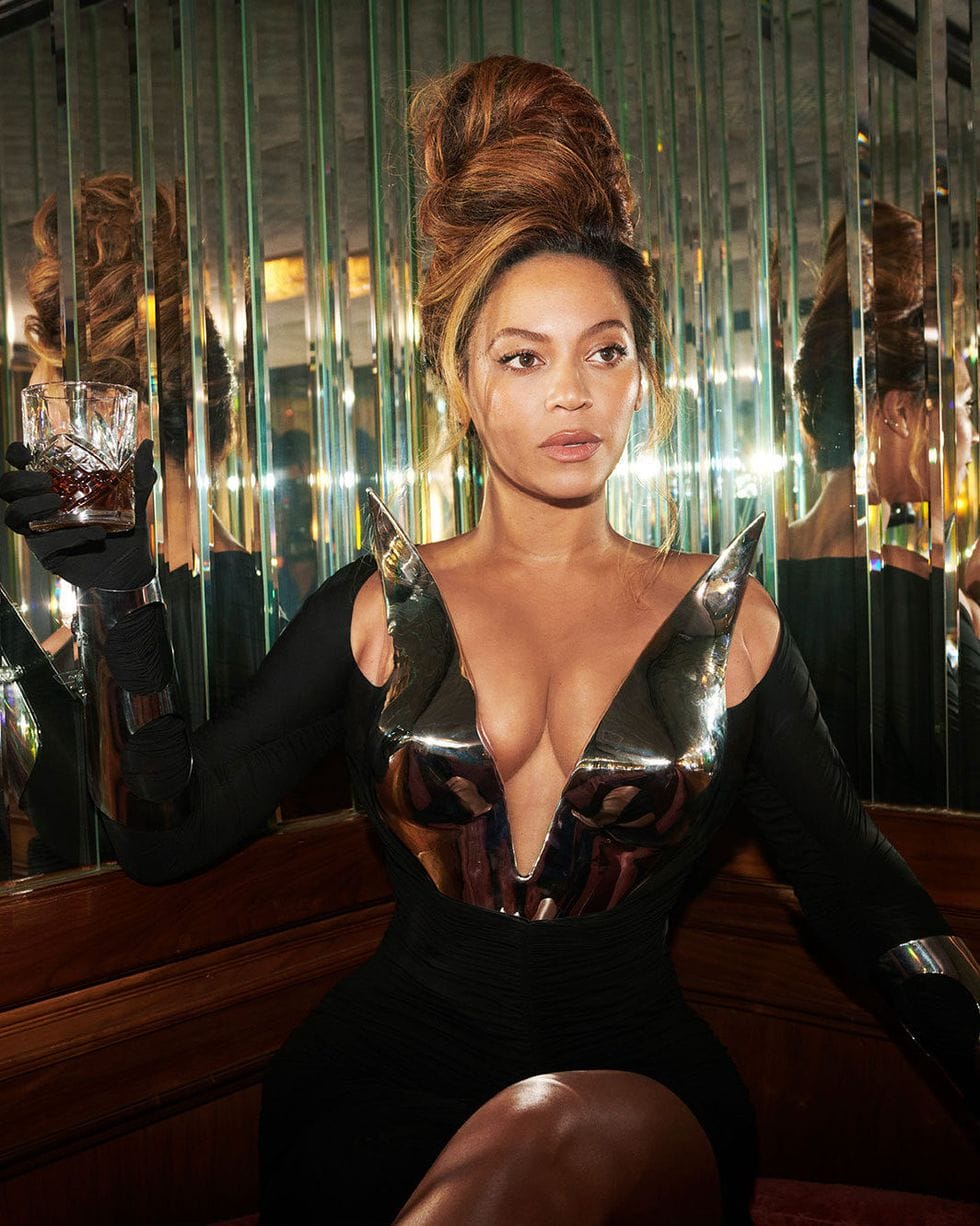
Beyoncé wearing Mugler. / Beyoncé
It not that other stars are not creating history-making images—Rihanna made street style into an artform, transforming the sidewalk into a public forum for joy and wild self-expression. The genius of a musician like Rihanna, or Lady Gaga or Madonna, is that they use the tools of their own time to make their statements. They love fashion, with all its madness, its constant change, its exciting possibilities for reinvention and role-play. But Beyoncé stands almost alone in her commitment to developing a total and complete look, then seeking out clothes that augment that reality. She is not interested in what seems of the moment, but rather, how she can create her own moment. It is the difference between fashion and style—and her videos, images, and music all add up to the resounding decree that style is indeed substance.
Probably the only musician with a similar approach is David Bowie, who we think of as constantly evolving, but in many ways was simply refining and redefining a glorious, totally original sense of vision. He might reference other eras, other musicians, other ideas. But the look and the feeling always felt like nothing else. It was not about interpreting our times but about what becomes possible when one allows oneself to become fully subsumed into a universe.
The exception that proves the rule is the clutch of names dropped on Renaissance: on “Summer Renaissance,” she namechecks “Versace, Bottega, Prada, Balenciaga / Vuitton, Dior, Givenchy, collect your coins, Beyoncé.” But the line comes off more like classic rap braggadocio; it’s lucky for these European brands that their names all rhyme. It’s the line that follows that’s more intriguing: “So elegant and raunchy, this haute couture I’m flaunting / This Telfar bag imported, Birkins, them shits in storage.” On Monday, The Real Real reported that on the day of the album release alone, the site saw an 85% spike in searches for Telfar. The Birkin may be the most famous, most coveted handbag in the world, but it’s the Telfar tote that fits into Beyoncé’s—and thus her fans’—world.
This story has been updated.
– – – – – –
This story originally published on harpersbazaar.com


